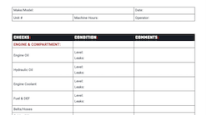Trailer Makers’ Brave New World
This story appears in the Jan. 23 print edition of Equipment & Maintenance Update, a supplement to Transport Topics.
In less than 12 months, motor carriers are scheduled to encounter their first experiences with trailers designed to reduce greenhouse-gas emissions and increase fuel efficiency. The latest federal government mandate to clean the air imposes standards for the first time on semi-trailers, creating what many consider to be a brave new world for trailer makers and suppliers of aerodynamic devices.
 Phil Romba
Phil RombaThe closer we get to Jan. 1, 2018, the more clearly we see that high fuel prices nearly 10 years ago drove the equipment trends today that will ultimately be deployed to satisfy the first round of Phase 2 requirements. The growing use of aerodynamic devices will do the trick, not lightweighting, according to trailer and aerodynamic device suppliers.
Lightweighting, or the practice of substituting lighter weight materials for heavier ones, would not be used at this stage to reduce trailer weight and thereby offer greater fuel efficiency, they said. Lightweighting remains a design option for compliance with GHG regulations taking effect in 2021, 2024 and 2027. Some suppliers interviewed suggested lightweighting might not be an option for the latter regulations.
Comments by trailer makers were guarded about actual designs and certification processes for 53-foot dry vans and reefers used in linehaul service that will be needed to comply. Trailers referenced here will be those used in on-highway linehaul applications.
Widespread acceptance of fuel-saving devices on trailers began as the nationwide average price for a gallon of diesel fuel rose to $4.25 in early May 2008, according to CNN Money. The path leading to that historically high price and the sustained near-$4 per-gallon price from 2011 to 2014 pushed fleets to adopt fuel-saving devices — even on trailers. In reality, the trailer was the only portion of the combination vehicle that had not yet been optimized for fuel efficiency.
But soon, formal greenhouse-gas and fuel-efficiency regulations developed by the U.S. Environmental Protection Agency and the National Highway Traffic Safety Administration will force fleets to operate increasingly fuel-efficient trailers. To certify changes for 2018, trailer makers must certify a 1% to 2% improvement in fuel efficiency depending on trailer size and type, according to published reports. The improved fuel efficiency will be demonstrated with an improved aerodynamic coefficient of drag.
With a 2017 model as the baseline, trailers in 2021 must improve fuel economy and reduce carbon dioxide and GHG emissions by 5%, in 2024 by 7% and in 2027 by 9%. Agencies estimate the industrywide effect of more fuel-efficient trailers will be annual savings between $7.8 billion and $8.5 billion. Using the same base, the agencies estimated the cost of a 2021 trailer will be $806 higher, a 2024 trailer will be $1,015 higher, and a 2027 trailer will be $1,090 higher.
“To meet the requirements in calendar year 2018 and model year 2021, we expect the adoption of technologies widely in use today, such as low-rolling-resistance tires, automatic tire inflation systems and side skirts,” said Jamie Scarcelli, vice president, corporate strategy and governmental affairs, for Wabash National Corp.
Fleets want to see a return on their investment within a reasonable time period, typically two to three years. And in comments on the regulations, American Trucking Associations stressed that point, saying in part that fleets want to “achieve the greatest efficiency improvements at the least overall cost while minimizing downtime, maximizing durability and recognizing a positive return on investment over the course of equipment ownership.”
Bob Montgomery, vice president, innovative tire and mileage solutions at Stemco, agrees with that assessment. Stemco markets TrailerTail, a boat-tail device used on swing rear doors, among other aerodynamic devices for trailers, including side skirts. “It’s likely trailer manufacturers will seek the least-cost combination of technologies to meet the regulations since their fleet customers will demand this,” he said.
With usage rates of aerodynamic devices — side skirts, trailer tails, nose cones — climbing without federal regulations, it’s clear fleets do benefit through reduced fuel consumption. According to Chris Lee, vice president of engineering for Great Dane, the number of trailers ordered with aerodynamic devices is increasing and could become 100% over the next few years.
Trailer OEMs will “depend heavily on availability of certified aerodynamic devices to achieve the reductions demanded by the regulations,” Lee said. “The aerodynamic efficiency, ease of installation and weight are some of the important selection factors for both trailer OEMs and the end customers.”
Stemco estimates side skirts are included on 65% of box trailers throughout the industry. TrailerTail rear aerodynamic devices are specified on about 5% of trailers, and less than 1% of trailers have front-wall-mounted nose cones. Wabash estimates 50% of its new van trailers have an aerodynamic device.
While trailer-mounted aerodynamic devices help fleets save fuel, the savings only apply when trailers are pulled at highway speeds. That premise has been discounted before and appears to be discounted with this new rule.
In comments submitted before the rule was finalized, Utility Trailer Manufacturing Co. disagreed with the average highway speeds EPA used to calculate average fuel savings for various types of aerodynamic aids. EPA estimated trailers travel at 65 mph 86% of the time. Utility wrote that its fleet testing showed tractor-trailers reach 65 mph only about one-third of the time.
When California mandated fleets operate 53-foot dry vans that were EPA SmartWay Transport verified, faulty assumptions were used to estimate fuel savings and emissions reductions. Just as with these federal rules, estimated highway speeds were much higher than reality. In the case of California’s 2010 rule, my research showed a federal study of truck speeds on California’s Interstate 5 rarely averaged over 50 mph.
SmartWay is EPA’s voluntary program to encourage motor carriers and shippers to adopt strategies and operate equipment that reduce fuel consumption and GHG emissions. It offers fleets tools to track benefits of fuel-saving programs and maintains lists of tractors and trailers that have been certified to meet certain efficiency-improvement targets.
While trailer makers appear confident they can comply with the first round of GHG Phase 2 regulations as they take effect in 2018, the more aggressive standards in 2024 and 2027 pose significant challenges. But as they work toward those solutions, aerodynamic aids still appear to be enough to meet regulations — although those solutions remain to be developed.
Wabash’s Scarcelli said the biggest challenge will be integrating advanced aerodynamic devices. “The stringency is such that in these years, we will have to install technologies, such as boat tails, that have not yet been widely adopted by the industry,” he said.
In addition, he pointed out that fleets face different operating conditions and “tend to spec their trailers to meet those conditions.” The real challenge he sees is complying with the regulations while designing trailers that meet their operating needs.
Lightweighting appears a remote option based on what is known now. “The new rule doesn’t give much in the way of credit for lightweighting,” Scarcelli said, “so it will take a lot to move the needle from that standpoint.”
Stemco’s Montgomery agreed, saying, “Most weight- reducing concepts that are cost-effective have already been baked into the currently available trailer offering.” The promise of advanced aids such as rear boat tails for trailers with roll-up doors will only be realized through continued development work, he added, noting the “practicality of a boat tail on a roll-door trailer is a difficult problem to solve.”
Wabash reports 10% of its box trailers have roll-up doors.
New devices on trailers will require additional maintenance. Initial indications, though, suggest aerodynamic devices won’t require much of it.
Great Dane’s Lee said EPA expects aerodynamic devices to last 10 years. That coincides with many warranties currently offered on those products. As a result, he said, “Although some increase in maintenance cost is anticipated, maintenance due to durability of the devices is not expected to escalate.”
Ultimately, only those fleets currently operating trailers with side skirts, TrailerTails and the like can truly envision operating and maintenance costs, as well as fuel savings. While I will bet that EPA and NHTSA have overestimated expected costs and savings for Phase 2 GHG regulations, early indications suggest aerodynamic aids will help reduce fleets’ vehicle operating costs.
Freelance writer Phil Romba has covered trucks and maintenance as a full-time journalist and worked as a public relations manager for Volvo Trucks North America during his 20-year-plus career.



